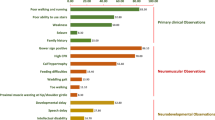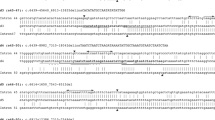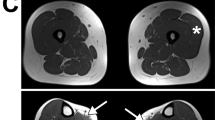Abstract.
The frequency and distribution of deletions of 19 deletion-prone exons clustered in two hot spots in the proximal and central regions of the dystrophin gene were compared in three populations from Singaporean, Japan, and Vietnam. DNA samples obtained from 105 Singaporean, 86 Japanese, and 34 Vietnamese Duchenne muscular dystrophy patients were examined by polymerase chain reaction amplification. Deletions of the examined exons were found in 51.2% of Japanese patients but in 40.0% or less of the Singaporeans and Vietnamese. About two thirds of the deletions were localized in the central region and the remaining deletions were clustered at the proximal region. The most commonly deleted exons at the central deletion hot spot were exon 50 in the Singaporean, exons 49 and 50 in the Japanese, and exon 51 in the Vietnamese population. At the proximal deletion hot spot, the most commonly deleted exons were exons 6 and 8 in the Singaporeans, exons 12 and 17 in the Japanese, and exons 8 and 12 in the Vietnamese. Two cases each from Singapore and Japan had large-scale gross mutations spanning both deletion hot spots. Our results suggest that, although the presence and frequency of the two deletion hot spots may be similar in the three Asian populations analyzed, the distribution and frequency of deletions among the different exons can vary as a result of population-specific intronic sequences that predispose individuals to preferential deletion breakpoints.
Similar content being viewed by others
Article PDF
Author information
Authors and Affiliations
Additional information
Received: May 20, 2002 / Accepted: July 1, 2002
Rights and permissions
About this article
Cite this article
Lai, PS., Takeshima, Y., Adachi, K. et al. Comparative study on deletions of the dystrophin gene in three Asian populations. J Hum Genet 47, 552–555 (2002). https://doi.org/10.1007/s100380200084
Published:
Issue Date:
DOI: https://doi.org/10.1007/s100380200084
This article is cited by
-
Mutational spectrum and phenotypic variability of Duchenne muscular dystrophy and related disorders in a Bangladeshi population
Scientific Reports (2023)
-
The analysis of DMD gene deletions by multiplex PCR in Indonesian DMD/BMD patients: the era of personalized medicine
BMC Research Notes (2019)
-
Intragenic deletion patterns of dystrophin gene in Duchenne and Becker muscular dystrophy patients from Algeria
Genes & Genomics (2014)



